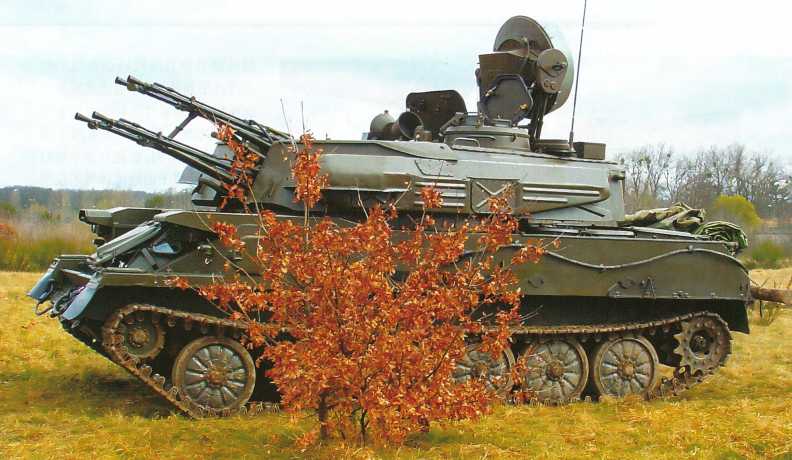The US think tanks, military and Congress have conducted dozens of rounds of war games for the confrontation between China and the US in the Taiwan Strait. The US military, relying on more than 300 military bases around China, dispatched 4-6 aircraft carrier battle groups, which could hardly play a big role in containing our powerful anti-access/area denial A2/AD strategy. The result was "a miserable victory and a miserable defeat". The US military was very frustrated with the results of the war games, but they also unexpectedly discovered that the most threatening to our army was not the bases and aircraft carriers, but the AGM-158B (JASSM-ER) long-range standoff stealth air-to-ground missile, the AGM-158C (LRASM) long-range standoff stealth air-to-ship missile and the famous veteran "Tomahawk" cruise missile. Some US media called them the "Three Musketeers" pointing their swords at the Taiwan Strait. Once our army launches a war of unification, the US military will focus on two war nodes. One is to defeat our army’s landing action and never let our army set foot on Taiwan Island; the other is to break our army’s land, sea, air, space, electricity, and network blockade of Taiwan Island, and lift the blockade line set up by our army to the east of Taiwan Island, so that the US navy and air force can smoothly reach the war zone. As long as there are sufficient numbers of "Three Musketeers", even if it pays the heavy price of sacrificing all military bases and some aircraft carrier battle groups in the Western Pacific, the US military is confident that it can eventually defeat the PLA’s military unification action.

Strategic bombers long-range raids
With the continuous development and improvement of the anti-missile system, the probability of missile penetration has become a big problem. China and Russia mainly take the hypersonic penetration route. The U.S. military believes that the current hypersonic weapons are suitable for attacking fixed targets, but the U.S. military needs to deal with mobile targets, such as warships at sea and missile platforms launched on land. The U.S. subsonic cruise and stealth technology has a solid foundation and was established the earliest, which gives it an inherent advantage. Therefore, the best way to meet this requirement is to use mature and reliable subsonic cruise missiles integrated with stealth technology, rather than relying on hypersonic technology whose impact on modern warfare is still uncertain and not very mature. Moreover, the development of hypersonic weapons is difficult and expensive, so it is safer and more convenient to take the subsonic stealth penetration path. Therefore, the U.S. military attaches great importance to the development of the AGM-158 series, adopts a large number of stealth technologies, and has a clear division of labor. The B-type missile is responsible for attacking land targets and repelling the enemy on the other side, and the C-type missile is responsible for attacking sea targets and hitting the enemy halfway across the river. Both missiles were developed by Lockheed Martin. The B-type missile was equipped with the US military in 2014. It is an extended-range version of the AGM-158 prototype missile. It is equipped with a more powerful turbofan engine. The maximum range has been increased from 370 kilometers of the original version to 926 kilometers. It uses inertial and GPS guidance in the initial and mid-stages, and infrared guidance in the terminal. Up to 8 target images can be stored in advance before launch, and automatic comparison is carried out when approaching the target. Once the recognition is successful, the 450-kilogram high-explosive warhead will kill with one shot. The C-type missile was put into service in 2018. It was developed on the basis of the B-type missile. The size of the airframe is almost the same as the low-detectability missile. At first, the maximum range was only 400 kilometers, but after technical improvements, it has reached 600 kilometers. Some US media also said that it has a comparable flight range with the B-type missile. It is equipped with a 454-kilogram armor-piercing blasting warhead, equipped with GPS, radio frequency sensors and infrared imaging composite guidance systems, ensuring that it can detect and attack mobile targets at sea under all weather conditions, without the need to exchange navigation data with the outside world, thereby eliminating its own radiation source and reducing the probability of exposure. Both missiles have strong network warfare capabilities. Even if the sensors and information networks are severely interfered with by the enemy and interrupted, they still have effective navigation and attack capabilities. Moreover, they are highly intelligent and can judge the weaknesses of the target’s defenses by themselves and launch attacks from more tricky angles. According to the Center for Strategic and International Studies (CSIS), by 2026, the U.S. military will have 3,200 Type B missiles in stock, which will be more strategically threatening. However, there will be only about 450 Type C missiles, which are difficult to adapt to the main role in naval warfare. Admiral Samuel Paparo, commander of the U.S. Pacific Fleet, publicly declared, "As long as the U.S. President and Congress make a decision, the Pacific Fleet’s six aircraft carrier battle groups and two Marine divisions will be immediately deployed to the western Pacific to assist Taiwan in its operations." The six aircraft carrier battle groups should be accompanied by about 30 "Ticonderoga"/"Arle Burke" cruisers/destroyers, more than 10 "Seawolf"/"Virginia" and other attack nuclear submarines, about 450 FA-18E/F and F-35C carrier-based fighters, more than 3,000 vertical launch units, capable of carrying no less than 4,000 "Sea Sparrow"/"Standard" series air defense/anti-missile missiles and "Tomahawk" land attack missiles. If they are placed at the doorstep of any country, it will be a disaster. In the recent war game simulation of the Taiwan Strait War, a Chinese think tank used the principle of "weakening our own side and strengthening the US military" and "forecasting the enemy’s leniency". It set a harsh electromagnetic environment, where our own information capabilities were severely weakened by more than one-third, and raised the extreme conditions that the US military’s ship-borne "Standard"-3 could intercept hypersonic missiles. It conducted 20 rounds of simulated attacks on the US military’s most advanced "Ford" aircraft carrier battle group, using 24 hypersonic missiles in each round. As a result, each round of simulated attacks could sink 5-6 US ships, and almost the entire "Ford" aircraft carrier battle group was written off. When the news came out, the US military was shocked. For 6 aircraft carrier battle groups, the People’s Liberation Army only needs to prepare 150 hypersonic missiles. If the DF-26D anti-ship ballistic missile is used, it is enough to block the US aircraft carrier battle group east of Guam and outside the South China Sea. The aircraft carrier has no home field and geographical advantages in the Taiwan Strait.

The US military has discovered that strategic bombers carrying AGM-158B/C stealth cruise missiles have more advantages than aircraft carrier battle groups. Currently, the US military has about 70 B-52H bombers, 20 B-2 stealth bombers and 40 B-1B supersonic bombers, all of which have the ability to launch AGM-158B/C. In particular, the B-2 completed system integration with AGM-158B/C in 2021, achieving a perfect combination of stealth ammunition and stealth platform. Last November, the US military used an MC-130J transport aircraft to airdrop the "Xunlong" pallet launch system over the Norwegian waters, completing a test launch mission of an AGM-158B, enabling a large number of US C-17/130 transport aircraft to also have long-range stealth firepower strike capabilities. Each B-52/1B/2 can carry 16-24 AGM-158B/Cs at a time, and each F-15/16/35 and FA-18E/F fighter can carry 2 at a time. However, tactical aircraft can only take off from the first island chain airport or aircraft carrier, and these airports or aircraft carriers are the primary targets of our joint firepower. Even if they fly into the sky, they will be intercepted by our Air Force’s advanced fighters such as J-20/16/11BG/10C. Therefore, the US military can only rely on strategic bombers and transport aircraft with bombing capabilities coming from Guam, Hawaii, Australia or the United States. However, they will definitely face our aircraft carrier battle group in the sky over the Western Pacific, which is composed of KJ-600 early warning aircraft and J-15/15T/35 and YJ-21 long-range hypersonic anti-ship missiles. The insurmountable sea and air interception line, the non-stealth B-52/1B and the C-17/130 carrying the "Xunlong" pallet, etc., will find it difficult to approach the favorable attack positions in front of our aircraft carrier formation, and they will be forced to abandon their original mission and return early. It is a high probability event. Only when the stealth B-2 does not get entangled with our aircraft carrier battle group can it have the opportunity to quietly cross our aircraft carrier interception line. As long as 5-6 B-2s successfully penetrate to the predetermined attack position east of Taiwan Island, they can launch nearly 100 stealth missiles for saturation attack at a time. Even if they are detected by our air defense/anti-missile system at close range, they will instantly occupy multiple terminal air defense fire channels. Our amphibious landing fleet and coastal assembly forces will inevitably suffer heavy losses, and the first landing operation is likely to encounter a major setback. CSIS’s military exercise in December last year showed that if 10 B-1Bs and 10 B-2s broke through the Chinese Navy’s aircraft carrier interception line and successfully launched a lightning strike, about 400 AGM-158B/C missiles would be enough to make the 30-year construction achievements of the Chinese Navy come to naught at once.
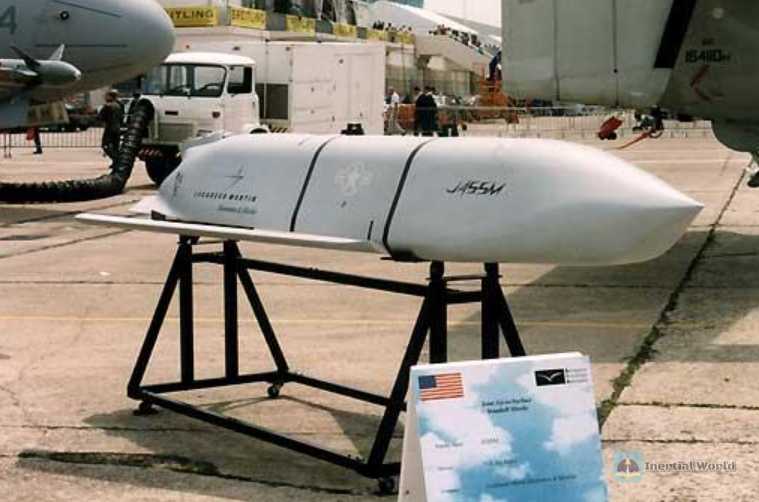

Attack nuclear submarines secretly attack
The U.S. Navy has the world’s largest nuclear submarine fleet and the world’s only all-nuclear submarine fleet. The current attack types include "Los Angeles", "Sea Wolf", "Virginia" and "Ohio" class, totaling 49. These nuclear submarines can be loaded with vertically launched BGM-109 "Tomahawk" cruise missiles to attack land or water targets. The maximum range of land strikes is 2,500 kilometers, the cruising altitude is 15-152 meters, the cruising speed is 0.72 Mach, the warhead weighs 122.5 kilograms, and uses inertial, GPS and terrain matching guidance. The latest improved anti-ship BGM-109E has a maximum range of 460 kilometers, a warhead weight of 454 kilograms, and uses strapdown inertial navigation and terminal radar guidance. Although the "Tomahawk" cruise missile does not have stealth performance, it has a strong ultra-low altitude penetration capability and is cheap, with each missile costing less than $800,000. Compared with ballistic/hyperbaric missiles of similar range and power, which cost hundreds to tens of millions of dollars, it has a high cost-effectiveness and is suitable for mass production and wartime saturation attacks. The total number of various types in the US military inventory currently exceeds 3,000. Since the United States withdrew from the "Intermediate-Range Missile Treaty", the US military has found that it has no available medium-range ballistic missiles. In the case of multiple failed test launches of hyperbaric missiles, the "Tomahawk" with its 2,500-kilometer combat range has undoubtedly become the first choice for the US military to strengthen its medium-range strike capability.
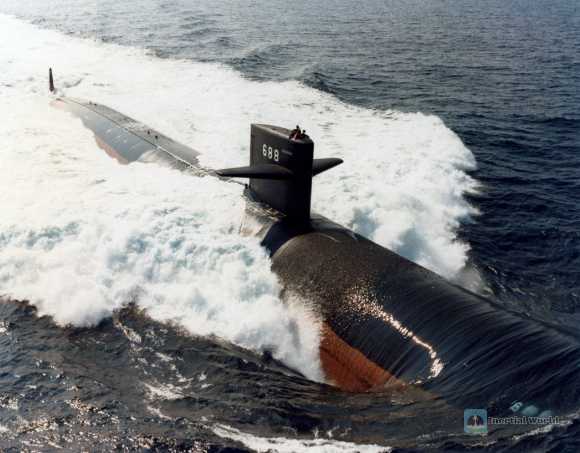
Each model and batch of attack nuclear submarines has a very different number of "Tomahawks" loaded. For example, the "Virginia" class has an underwater displacement of 7,800 tons and a maximum diving depth of 488 meters. Although it is a simplified version of the "Sea Wolf" class dedicated to ocean operations, it has made adaptive improvements that take into account both ocean and coastal operations in response to the reality of the US military’s dominance in the post-Cold War period. In addition to maintaining strong anti-submarine and anti-ship combat capabilities, it also emphasizes near-shore land attack capabilities. The prototype is equipped with 12 "Tomahawk" vertical launch tubes. In 2018, the US Navy decided to develop a "new type of load" for attack nuclear submarines to increase the load of cruise missiles and improve the saturation strike capability of attack nuclear submarines. The new "payload module" VPM of the "Virginia" class has four launchers that are 3.66 meters long and weigh 21 tons. Each launcher can accommodate 7 "Tomahawks". The displacement of this batch of "Virginia" class has increased to 9,800 tons, and the "Tomahawk" loading capacity has increased sharply from 12 to 40, greatly improving the combat capability under one-time replenishment conditions. Now the "Virginia" class is in mass production and will gradually replace the "Los Angeles" and "Sea Wolf" classes that have been retired one after another.
In the 1990s, the former Soviet Union and the Warsaw Pact, the strongest nuclear war opponent of the United States, disintegrated. The US military believed that it was costly and completely unnecessary to maintain 18 "Ohio" class strategic nuclear submarines for a long time. In 2002, the US Navy modified four of them to carry "Trident". "The strategic nuclear submarines that carry II-D5 intercontinental ballistic missiles have transformed into attack nuclear submarines equipped with Tomahawk cruise missiles. There are 24 launch tubes, except for 2 for special launch, the remaining 22 are all loaded with Tomahawks, 7 missiles per tube, and each nuclear submarine can carry up to 154 missiles at a time. 4 submarines can launch an astonishing 616 missiles at a time, and the saturation attack capability is very strong.
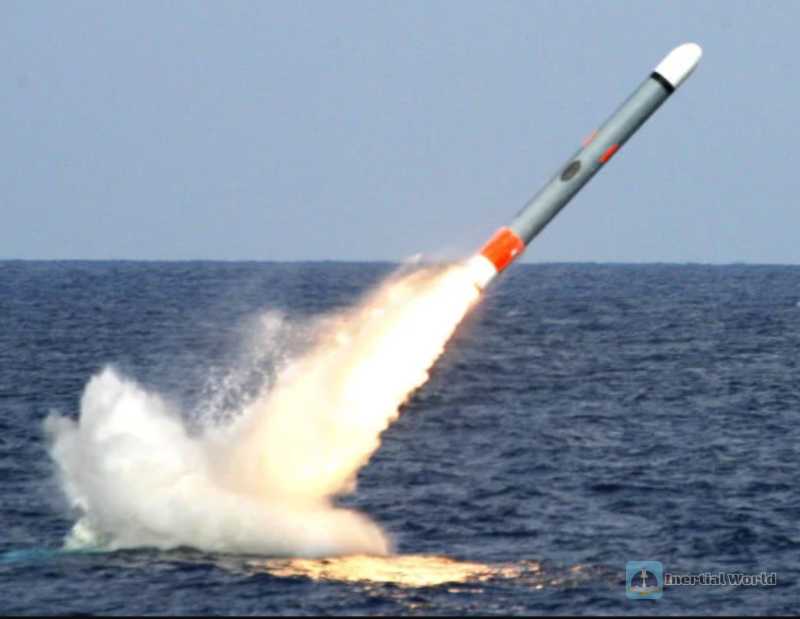
Once the war of unification of our army begins, the US Navy will lurk in the waters between the first and second island chains with a small number of submarine forces, try to hide outside the effective cruising radius of our KQ-200 anti-submarine patrol aircraft, and wait for an opportunity to launch the anti-ship Tomahawk to sneak attack our Navy’s aircraft carrier battle group cruising in the Western Pacific to carry out the interception/blockade mission. Most of the submarine forces are lurking in the waters near the east of the first island chain, blocking the Miyako Strait and the Bashi Strait, preventing our navy’s surface and underwater fleets from advancing to the Western Pacific. With the assistance of P-8A/3C anti-submarine patrol aircraft and underwater sonar detection systems, they are sniping at our 094 strategic nuclear submarines, 093 attack nuclear submarines, 039AIP/Kilo conventional attack submarines and unmanned attack submarines (submarine vehicles) that are preparing to break through the first island chain in the Bashi Strait, and searching and encircling our underwater submarine forces that have already broken through the first island chain. At the same time, they are saturating the launch of anti-ship/land attack "Tomahawks" to attack important strategic targets such as our air/airborne troops that have successfully landed on the island, the amphibious fleet that is crossing the voyage, the follow-up troops assembled in the port, the deep missile firepower platform, the airport, the command organization and the logistics support base. The sneak attack tactic is adopted because once a nuclear submarine launches a missile from underwater, it will immediately expose its position. Under the tracking of KQ-200, Z-9C/18F/20F, and Ka-28 anti-submarine helicopters, it is basically impossible to escape. Although it can run at a high speed of 30 knots for a long time underwater, it is simply staggering in the face of aviation anti-submarine equipment. The U.S. military has a special liking for the "Tomahawk", mainly because of its mature and reliable technical and tactical performance. Relying on ultra-low-altitude flight and large-scale saturation attacks, most countries are difficult to defend. Even when attacking targets in complex terrains such as mountainous areas, its unique terrain matching guidance enables it to flexibly climb over various ground obstacles. It has been famous as early as the Gulf War. The U.S. military has used it very smoothly for more than 30 years and has long formed a "Tomahawk" cultural tradition. Working in coordination with AGM-158B/C, it can make up for some of its own penetration shortcomings, and it is cheap and has obvious scale effect, but after all, it does not have stealth capability. It can only avoid radar detection by ultra-low altitude/sea-skimming flight. Facing our army’s advanced air defense system with high informationization and strong electromagnetic capability, it has almost no effect. The low speed of 0.7 Mach provides multiple interception opportunities for our sea/land-based HQ-9B/22/17/16B/11/10/7B/6A and other long-, medium- and short-range air defense missiles and 6-25/4-25/double-35/7-30/11-30 and other close-range rapid-fire gun systems. Even if a saturation attack is launched, the probability of penetration is very embarrassing. In order to more effectively deal with the confrontation between major powers, the US Navy has formulated a detailed plan to develop the AGM-158B/C submarine-launched type, which is currently being developed and tested. With the strong national defense science and technology strength of Lockheed Martin, it is estimated that it will take only 2-3 years. The US Navy is also preparing to integrate the repeatedly failed "universal hypersonic glide body" C-HGB into the "Virginia" Block 5 nuclear submarine, and plans to complete it by 2029. Once the AGM-158B/C and C-HGB are connected to attack nuclear submarines, it will pose an unprecedented threat to our military operations in the Taiwan Strait, the South China Sea and the ocean.
West Pacific bases are on standby for raids
The US military threatens the whole world. In addition to nuclear weapons, conventional means mainly rely on aircraft carrier battle groups, strategic bombers, attack nuclear submarines and bases around the world. Marianne Williamson, the 2024 Democratic presidential candidate of the United States, revealed that "the United States has 313 military bases around China." This should be the most reliable statement of the US top leaders. These bases are mainly distributed in the first and second island chains with Japan, South Korea, the Philippines and Guam as the focus. Large bases include Yokota, Kadena, Osan, Naha, Yokosuka, Andersen Air Force Base in Guam and Apra Naval Base, etc. At least 300,000 troops can be stationed in wartime, which is a "fatal" threat to the unification and national rejuvenation of our country.
Once our army launches a war of unification, the U.S. military will be troubled by how to use the Western Pacific base group to stop our actions. If the naval and air forces in the base are deployed to blatantly attack our army, the consequence will be that the entire Western Pacific base group will be wiped off the face of the earth by our army. DF-17/27 hypersonic missiles, DF-21D/26 anti-ship ballistic missiles, YJ-21 hypersonic anti-ship missiles, YJ-12/18 long-range anti-ship missiles, DF-10A/100 cruise missiles and DF-15/16 medium-range ballistic missiles, etc., with the coordination of advanced fighters such as J-20/16/16D/11BG/10C, JH-7A2, H-6K/N/J, KJ-500 and world-class weapons such as 055/052D/054A, "Liaoning/Shandong/Fujian" aircraft carriers, and 093 attack nuclear submarines, and the support of the strategic support force’s superb information and electromagnetic combat system, are enough to make all the bases and aircraft carrier battle groups of the US military’s first and second island chains disappear into thin air. Almost all military exercises in the United States have come to the same conclusion. As the commander of the US Pacific Fleet, Paparo, said, "Only fools are not afraid of the Chinese Rocket Force." If the U.S. military does not take any action, leaving such a huge base force, but watching our army occupy Taiwan Island, it will not only lose Taiwan, a chess piece to contain my country’s rise, but more importantly, it will make Japan, South Korea, Australia and NATO and other allies "disappointed", and many "fence-sitting" countries will re-select sides. Turning away from the United States will become an unstoppable trend in the world, and the U.S. alliance system will quickly collapse.
The U.S. military has a headache, and in fact, our army also has a headache. As long as the Western Pacific base group exists, it will always be a big worry in my heart. When to clear the base group is a big strategic problem. Should we fire the first shot first, directly drag the U.S. military into the water, and shatter its dream of "proxy" war; or wait for the U.S. military to take action first, and then our army will clear the field. The former war of unification will inevitably become a Sino-US war, and the latter war of unification will inevitably suffer heavy losses. If the U.S. military does not intervene before my landing operation, even if our army bombards Taiwan’s military facilities, the U.S. military will turn a deaf ear. Moreover, the US military may even quickly transfer naval combat assets to Guam, Hawaii and Australia, so that these slow-moving ships will not have time to escape when the Chinese and American militaries take action. The aircraft carrier fleet will move more than 2,500 kilometers away from the Taiwan Strait to avoid the threat posed by DF-17/21D/26 and YJ-21. However, the air force combat forces continue to stay in the first island chain and wait for the best time to attack. Kenneth Wilsbach, commander of the US Air Force Pacific, said, "In the future, if the US military intervenes in the Taiwan Strait, it must first sink the PLA warships." "The Pacific Air Force is currently stepping up training and has dispersed various advanced weapons and equipment to multiple islands near the Taiwan Strait for preparation." The US military believes that the PLA will never take the risk of provoking a war between China and the United States and take the initiative to launch a preemptive strike against the US military base. It can be seen from the CSIS war game report that the US military will not blindly intervene, but wait and act, and at the critical moment, unexpectedly fire the key first shot. The key nodes that the US military is keeping a close eye on are our landing operations. As long as our army does not land on the island, the US military will not take action and will at most provide some "Starlink" communication and intelligence support to the Taiwan army.
Once our army launches a landing operation, the US Pacific Air Force will suddenly attack and attack halfway across the island. All F-15/16/35 fighters and a small number of temporarily deployed strategic bombers and "Swift Dragon" transport aircraft in the first island chain quickly took off with bombs. In order to avoid interception by our advanced fighters of the Air Force, they flew in the opposite direction to the relatively safe airspace east of Ryukyu and the Philippines. On the surface, it seems that they are collectively retreating eastward, but in fact they are occupying safe launch positions. In a very short period of time, multiple fighters saturatedly launched AGM-158B/C. With the long range of nearly 1,000 kilometers, super route planning and stealth penetration capabilities of AGM-158B/C, it will inevitably cause heavy losses to our joint landing forces. After completing the attack, some fighters immediately moved away from the first island chain and quickly moved to the second island chain and further distributed combat islands, while the other part of the fighters coordinated with the air force of the second island chain to attack the aircraft carrier battle group of our navy cruising in the Western Pacific from the east and west. The US military’s goal is very clear. Once it takes action, it must destroy the high-quality naval assets accumulated by the People’s Liberation Army in the past 30 years, including aircraft carriers, 055 large destroyers, 052D destroyers and 075 amphibious assault ships and other advanced equipment. This is the worst base raid conspiracy of the US military that our army must focus on guarding against. Although it can cause heavy damage to our army, the price is that the US military must completely abandon the Western Pacific base group that has been painstakingly managed for 80 years since the end of World War II and completely get out of the Western Pacific. With such a big bet, does the United States dare to take a gamble? Even if our army fails in the first batch of landings, after the US military is driven out of the Western Pacific, our army launches another landing operation. How will the US military respond? Count on Japan to act as cannon fodder? I am afraid that it can only watch China’s reunification cause succeed.
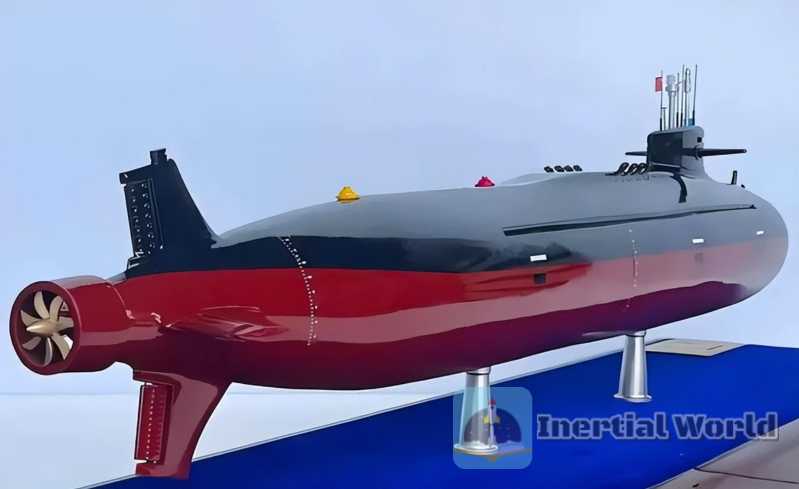
In addition to the Air Force launching AGM-158B/C to attack our army, the US Army’s "Multi-Domain Task Force" and the Marine Corps’ "Littoral Combat Regiment" distributed on multiple small islands in the first island chain will use the "Typhon" land-based medium-range missile system to launch "Tomahawk" and "Standard"-6 ground-attack missiles at us, attacking our air/airborne landing sites, ferry ships, land fire platforms, support bases, troop assembly points, airports and port facilities. The maximum range of the land-based "Tomahawk" is 1,700 kilometers, and the maximum range of the "Standard"-6 is only 370 kilometers. The "Korea Daily" reported on June 27 that "the US Army recently used the "Typhon" system to successfully launch a "Tomahawk" missile"; "Senior US officials privately revealed that the US military will deploy the "Typhon" system in South Korea in 2024"; "It can cover the heart of China." "Typhon" is not a brand new system. It is the result of a simple splicing of existing weapons. The "Tomahawk", "Standard"-6 and 4-unit MK-41 vertical launch devices are integrated into the same launch vehicle. A set of "Typhon" system 4 launch vehicles can launch 16 missiles at a time, which is equivalent to moving the ship-borne missile launch system to the vehicle after being simplified. The US military knows that it is difficult to penetrate the dense air defense network of the People’s Liberation Army with the ability of "Tomahawk" to penetrate at ultra-low altitude. Therefore, the US military will not stop at the current level of "Typhon". In the future, it plans to integrate AGM-158B/C, and will also integrate "Standard"-3Block2A and "Standard"-6 air defense/anti-missile missiles, so that "Typhon" has the offensive and defensive capabilities to block all strait channels in the first island chain and intercept our fighter jets and missiles. In fact, what the Korean media said is not wrong at all. South Korea’s self-made "Hyunmoo" series missiles are enough to strike the entire territory of North Korea, and there is no need for "Typhon". In addition, South Korea has 41 US military bases with nearly 30,000 US troops stationed. "Typhon" undoubtedly refers to China. According to US media reports, "’Typhon’ will soon be deployed to Japan and Ryukyu, and Japanese senior officials are very cooperative in private"; "’Typhon’ will be deployed to Philippine bases in the form of joint military exercises, military exchanges, and weapons displays. Although there is strong opposition in the Philippines, the Philippine government has no ability to stop any military actions of the US military."

Our military’s response strategy
On June 12, Major General Sergei Goryachev, Chief of Staff of the 35th Russian Army, was killed in the "Storm Shadow" attack in the Zaporizhia area. On July 11, Lieutenant General Oleg Yurievich Zokov, deputy commander of the Russian Southern Military District, was also killed in Berdyansk by the Storm Shadow. Two consecutive "beheading" incidents of stealth cruise missiles in less than a month have seriously dampened the morale of the Russian troops on the front line. The stealth technology of the United States is far superior to that of Europe, and the stealth performance of AGM-158B/C is even better than that of the Storm Shadow. The bloody lessons of the Russian army warn us that we must not take it lightly.
Dart, an expert from the British Royal Institute, believes that if a war breaks out between China and the United States, it is not China’s powerful rocket force, nor the 11 aircraft carrier battle groups of the United States, nor the bomber groups fired at each other by both sides that will determine the direction of the war, but the "battlefield situation awareness" capability. Although this is not a new point of view, it is rare to discuss it separately in the Sino-US war. Dart believes that both China and the United States have powerful means of firepower delivery, which can ensure that they can be destroyed as soon as they are discovered. The US aircraft carriers and the PLA’s anti-ship ballistic missiles can play a decisive role. Although China and the United States maintain asymmetric combat advantages over each other in some aspects, this ability is difficult to form an absolute advantage in systemic operations. Therefore, whoever discovers first will take the lead.
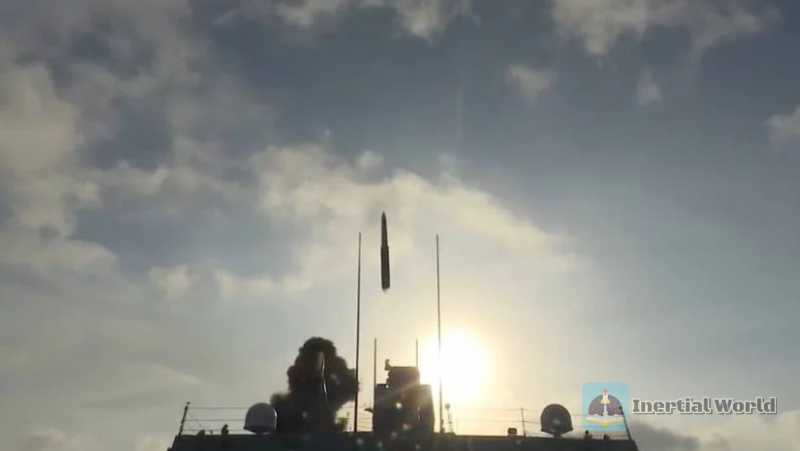
The US military’s wishful confidence in stealth cruise missiles is completely based on the premise that our army is "difficult to detect". At the end of 2022, in an air defense exercise of our navy, the 052D destroyer shot down all 12 incoming stealth target missiles, which shows that our army has prepared for a rainy day. The key to intercepting AGM-158B/C is "battlefield situation awareness". As long as it can be accurately discovered at a long distance, its low speed of 0.7-0.8 Mach, relying on our army’s existing advanced air defense/anti-missile firepower system, there is no difficulty in interception. But we must admit that, except for a few 052D/055 destroyers with high-precision large phased array radars and advanced air defense systems such as the land-based HQ-9B, most sea-based/land-based air defense radar systems generally have the problem of difficulty in detecting and locking ultra-low-altitude stealth targets. Even if they can be detected, the distance is very close, and there is almost only one last interception opportunity left, and they cannot resist saturation attacks. Therefore, when dealing with stealth cruise missiles, we must not only despise them strategically, but also attach importance to them tactically.
We must focus on the development of medium- and long-range infrared optoelectronic early warning detection systems to ensure that they can provide our air defense system with a detection distance of more than 50 kilometers to win more than 3 interception opportunities. The US power website has done a lot of analysis on the rotating optical device at the front of the Liaoning ship’s island, and believes that this is a panoramic infrared search and tracking system IRST specifically for AGM-158C and NSM stealth missiles. Relying on the huge space and super-strong power on the ship, the size and power design of IRST will not be limited, and it is much more powerful than the airborne IRST. It is a passive detection device that detects and tracks by searching for infrared signals radiated by the target. It is not affected by electromagnetic waves and electronic warfare has no effect on it. At present, it is urgently needed to further optimize the technology, continuously reduce the size and weight of the ship-borne IRST system, and promote it to destroyers/frigates and land air defense forces as soon as possible.
It is also necessary to develop medium- and long-range infrared guidance or infrared/radar composite guidance air defense missiles. Our army has been equipped with multiple generations of "Hongying", "Qianwei"/"Pili" and other short-range infrared air defense/air-to-air missiles. The HQ-10 near-missile defense commonly equipped on destroyers and frigates has long applied passive radar and infrared imaging composite guidance technology. The current main bottleneck is the improvement of infrared detection and guidance power. In wartime, we should give full play to the role of KJ series early warning aircraft and large high-speed reconnaissance/electronic warfare drones such as "Wuzhen"-7/10, WJ-700, and "Attack"-11. Multiple early warning aircraft and drones should target the weak parts of AGM-158B/C stealth, cross-detect from above and to the side of its possible flight path, which usually has a higher probability of detection, and then guide the ship/aircraft/vehicle-mounted infrared guided missiles or laser and microwave weapons to destroy it. Facing the US military’s inventory of more than 3,000 stealth missiles, passive defense alone is definitely not enough, and we should also find ways to intercept and destroy its launch platform to prevent it from getting any launch opportunities.
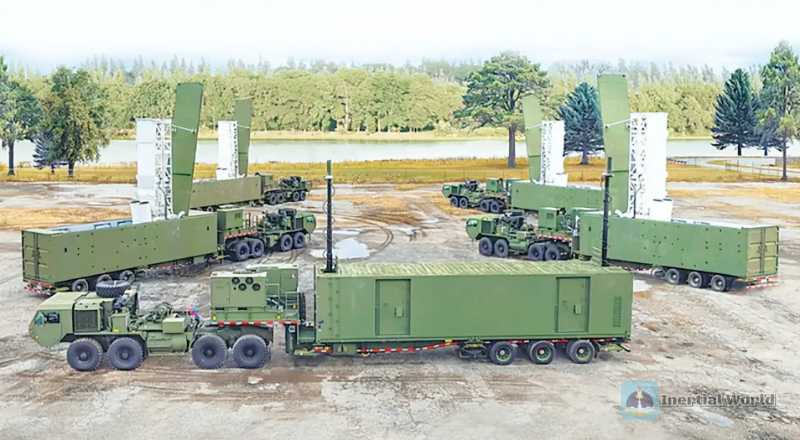
While developing hard destruction capabilities, it is also very important to vigorously enhance soft kill capabilities such as electromagnetic warfare. At the Changchun Air Show in July, the Air Force publicly exhibited the RCT-195B data link tracking jammer. Western media generally believe that the jammer can strongly interfere with, block or interrupt the enemy’s wireless communications, effectively cut off the enemy’s data link, destroy complex communication signals, and cause the ammunition that needs to communicate with the platform to lose its target. The AGM-158B/C uses the data link of the US ViaSat company to form a network data connection with the launch platform. Although it can autonomously aim at the target under the guidance of GPS and infrared imaging, if the data communication is cut off for a long time during the flight, it is hard to say. The US military will not sit idly by and is currently continuously improving the comprehensive combat performance of the AGM-158B/C. First, it plans to replace it with a more advanced missile-borne engine, a new propellant and the fourth-generation CL-20 explosive to further enhance its combat effectiveness. The first is to increase the range and explosive power of the missile so as to destroy our high-value solid targets in depth on land, our aircraft carrier fleet at sea and our amphibious fleet at sea at least 1,500 kilometers away; the second is to adopt more advanced material technology to improve its omnidirectional stealth capability and minimize our "battlefield situation awareness" capability; the third is to develop land/ship/submarine launch models based on the air-launched model, expand its multi-platform application potential, and comprehensively improve the joint combat level of the army, sea, air force and marines; the fourth is to accelerate the development of more difficult and repeatedly failed hypersonic missiles. As soon as possible, we should realize the dual penetration mode of "stealth" and "hypersonic" to completely deprive our army of its counterattack capability. The US military attaches so much importance to stealth cruise missiles, which is also a reminder that missiles cannot be fast, but should attach importance to both hypersonic speed and stealth. Only by taking both approaches can we achieve the maximum combat effectiveness. my country has mature technology for the development of stealth aircraft, and also has the ability to develop various cruise missiles such as sub-/hyper-/hyper-supersonic. As long as we are determined, I believe that we will develop highly intelligent stealth cruise missiles that are no less than AGM-158B/C in a very short time.

















